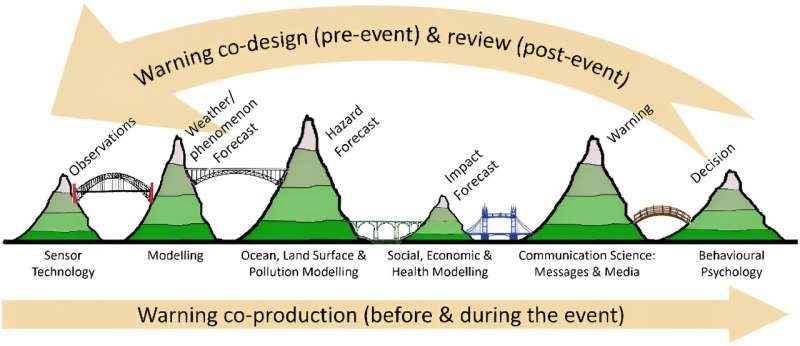In a pioneering college class, students studying meteorology at the University of Miami have taken on the tricky task of assessing the information flow during impactful weather events. This work will continue to enrich a global database and influence the future of disaster preparedness and response.

The Classroom as Crisis Management Crucible
think of a classroom where pupils do not learn from the textbook but experience a real catastrophe. And that is exactly what the University of Miami Rosenstiel School of Marine, Atmospheric and Earth Science has done.
Budding meteorologists here, under the advisement of Professor Sharan Majumdar, who are attacking a hot subject following epic storms — How good were those forecasts? But who were most vulnerable and why? How well were alert messages propagated to the population?
Applying the economic value chain, they are breaking down how information travels during weather events that can have a high impact all the way from initial forecasts to the public reaction. It is probably one of the most unheard of thing in the whole world and it really lets you know how many sectors are connected and what they can all contribute to deciding exactly those decisions that are made about a crisis.
The case of Ida, Ian and Idalia’s: Tragedy to triumph
The students first investigated three catastrophic Atlantic hurricanes [Ida, Ian, and Idalia] as part of their journey. Based on a questionnaire prepared by the UN’s World Meteorological Organization (WMO) as well as multiple sources like media websites and government reports, these young researchers took a deep dive into the hazards, impacts, warnings, and responses related to each storm.
Those findings were then collated into full-fledged reports that WMO included in its world database. A vast new trove of data is available to emergency managers, disaster planners, and storm modelers world-wide that can be used to improve forecasts, warnings, and responses during land-falling hurricanes.
However, the students’ impact doesn’t end there. In Australia, their counterparts at the Bureau of Meteorology are working on projects that analyze disasters in a similar way — from the Australian Black Summer fires to floods of 2022. That’s what is building this global movement that will lead to a better way so we can build a stronger and more effective crisis system.
Conclusion
A groundbreaking exercise around a new value chain theme developed by Professor Majumdar and his pupils at the University of Miami has changed the landscape for quick disaster response. This not only trains the future meteorologists to learn how to analyze the flow of critical information, but also will save lives during future events. As the students explore even further, there will only be more discoveries made in this wonderful community that is becoming more well equipped for the changing forces of nature.
